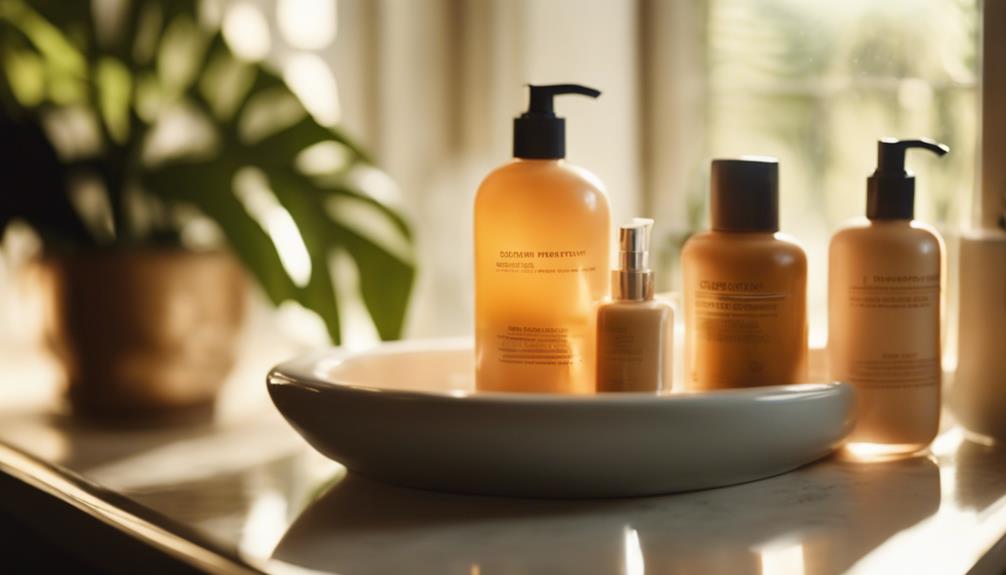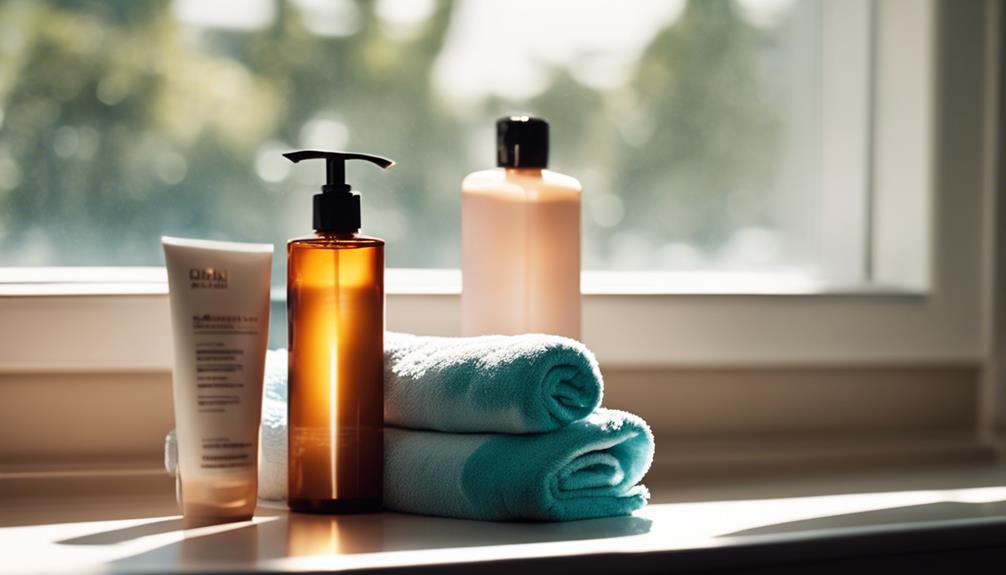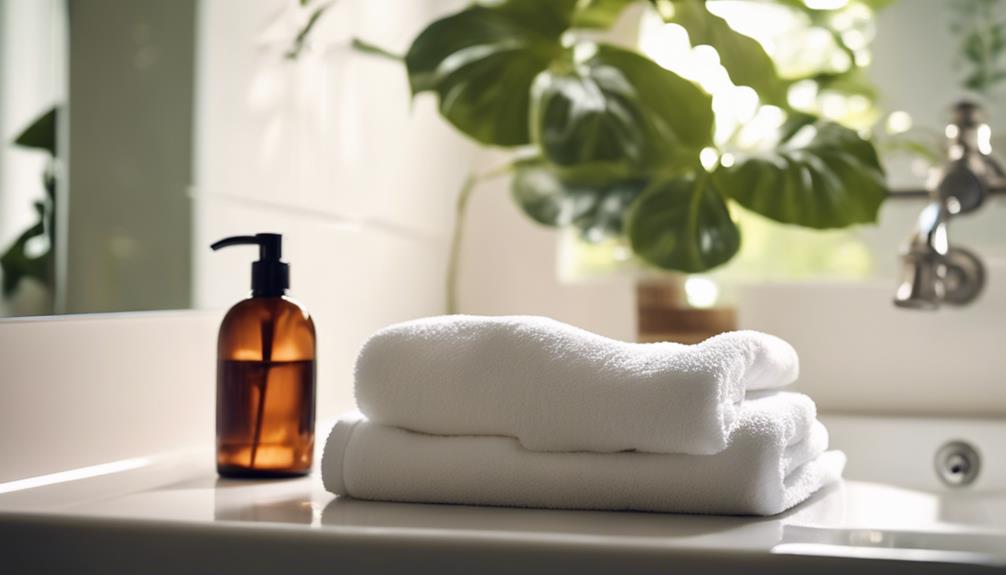Mastering tanning bed lotion application secrets is all about prep and technique! First, know your skin type—each type needs different care. Exfoliate before applying lotion to help it stick better. When applying, use circular motions and don't forget those tricky spots like elbows. And hey, wear gloves to keep your hands from turning orange! Be sure to pick lotions made for tanning beds; they'll help you glow more and burn less. After your session, hydrate your skin and sip some water, too! Stick around, and you'll discover even more tips for that perfect sun-kissed look! Remember, patience is key—don’t rush the process, and always follow the recommended duration for your session to avoid overexposure. One of the most important tanning bed preparation tips is to avoid wearing perfumes or deodorants beforehand, as they can react with UV light and irritate your skin. With the right care and attention, your radiant tan will be both safer and longer-lasting!
Key Takeaways
- Exfoliate your skin before application to ensure even absorption and avoid patchiness during tanning.
- Use gloves when applying lotion to prevent staining and maintain a clean application.
- Apply lotion in circular motions, focusing on dry areas for uniform coverage and optimal results.
- Allow the lotion to fully absorb into your skin before entering the tanning bed to maximize effectiveness.
Skin Type Assessment
To master tanning bed lotion application, you first need to assess your skin type to choose the right products for your unique needs.
If you've got pale skin, you'll want to be extra cautious since it burns easily, so don't skimp on the lotion!
If your skin is light brown or olive, you can enjoy a gradual tan but still need to watch for burns.
Caramel or medium brown skin tends to bronze beautifully, while rich brown skin is like a tanning superstar with minimal burn risk.
No matter your shade, pick lotions made specifically for indoor tanning.
Trust me, your skin will thank you for avoiding those pesky adverse effects that can happen with the wrong products!
Choosing the Right Lotion
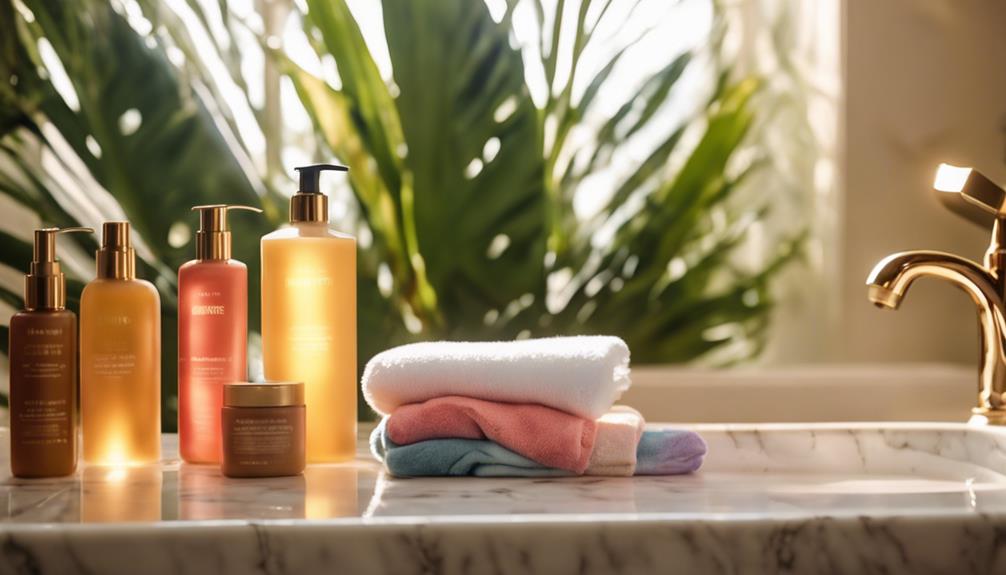
Selecting the right tanning lotion is essential for achieving your desired tan while protecting your skin. You wouldn't want to look like a lobster, right?
Here are some tips to help you choose wisely:
- Know Your Skin Type: Different skin types react differently to tanning.
- Look for Indoor-Specific Products: These lotions are designed for tanning beds and work best.
- Check the Ingredients: Seek out bronzers or intensifiers for a richer color.
Taking the time to select the perfect lotion can make all the difference.
Immerse yourself in the world of tanning with confidence, and soon you'll be flaunting that gorgeous glow!
Preparing Your Skin
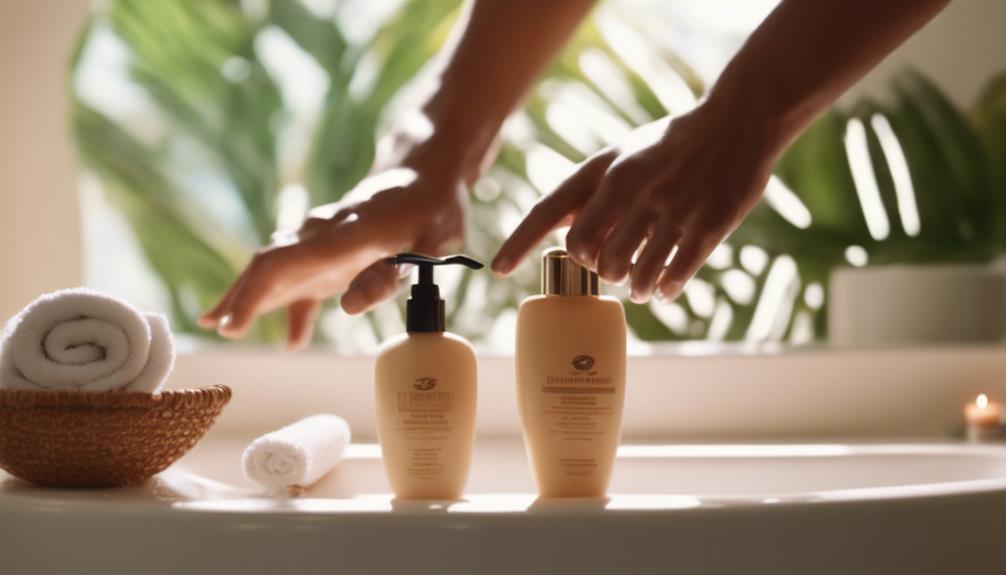
Preparing your skin properly before a tanning session is essential for achieving that even, sun-kissed glow you desire.
First, give your skin some love by exfoliating! This removes dead skin cells, helping the lotion stick better and giving you a smooth canvas.
Next, hop in a warm shower to open your pores, allowing for maximum lotion absorption.
Don't forget to protect your lips with some SPF lip balm; they deserve a little TLC too!
And hey, if you've got sensitive areas like elbows and knees, be sure to pay extra attention there.
Application Techniques
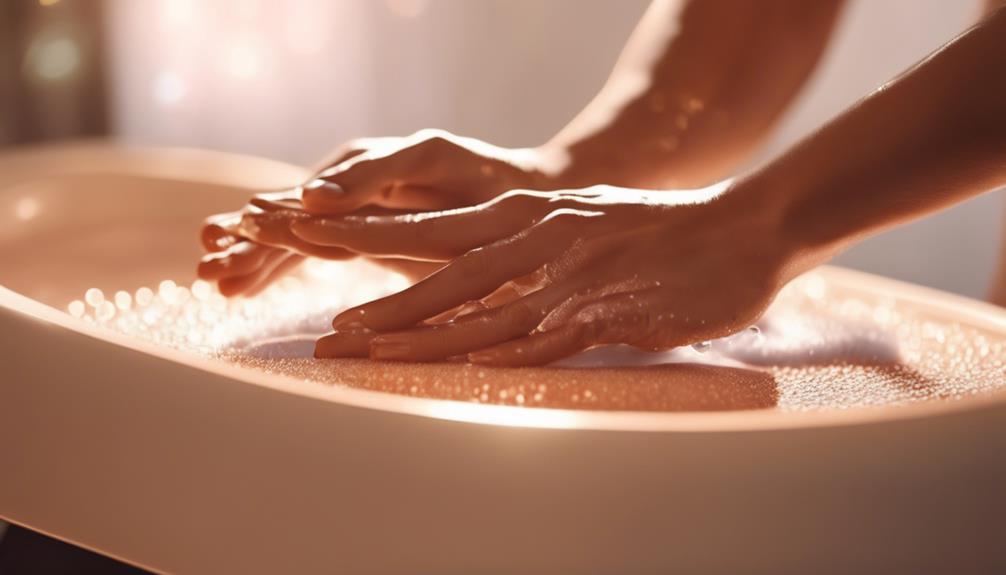
Applying tanning lotion correctly is essential for achieving an even and radiant tan, so use circular motions to guarantee thorough coverage across all areas of your skin.
Don't forget those tricky spots like your elbows and knees, which tend to soak up color unevenly!
Here are some tips to keep in mind:
- Exfoliate before applying to remove dead skin cells.
- Use gloves to avoid staining your hands.
- Allow the lotion to absorb fully before hitting the tanning bed.
Session Strategy and Safety

To achieve the best results while tanning, start your sessions slowly and gradually increase the duration to avoid overexposure. Think of your skin like a sponge—it needs time to soak in those rays!
Use a timer to help you keep track, so you don't lose track of time and turn into a lobster. Always give your skin a little downtime between sessions; it's like a mini vacation for your skin to recover.
Don't forget to wear protective eyewear to guard your peepers from UV rays, and slather on that SPF lip balm!
Post-Tan Maintenance
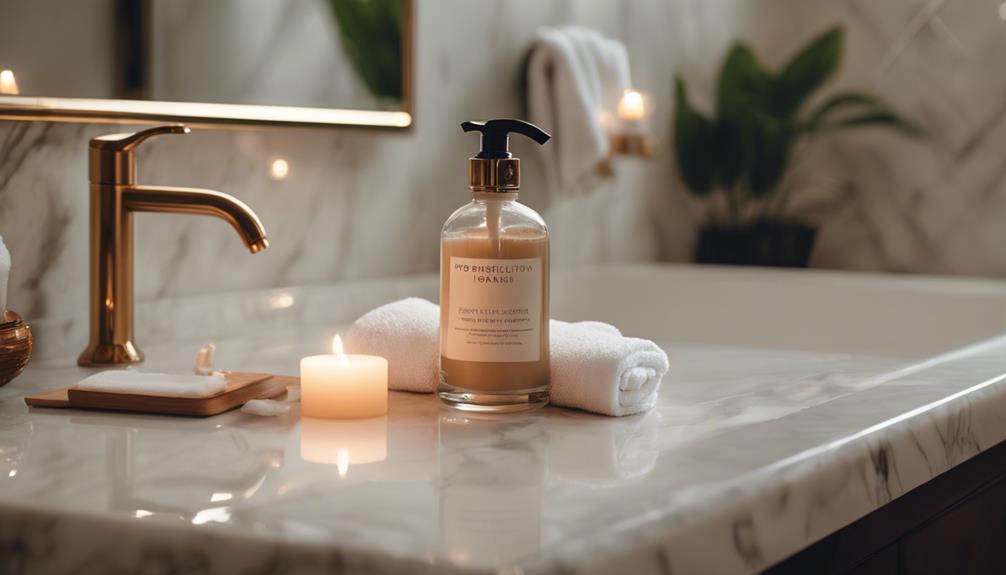
Maintaining your tan requires consistent hydration and moisturization to prevent dryness and guarantee a lasting glow. After that tanning session, don't just sit there like a sun-dried tomato! Get your skin some love right away.
Here's what you should do:
- Slather on a moisturizer to keep your skin soft and supple.
- Drink plenty of water to keep your skin hydrated from the inside out.
- Exfoliate gently every few days to maintain that even tan without looking patchy.
Common Application Mistakes
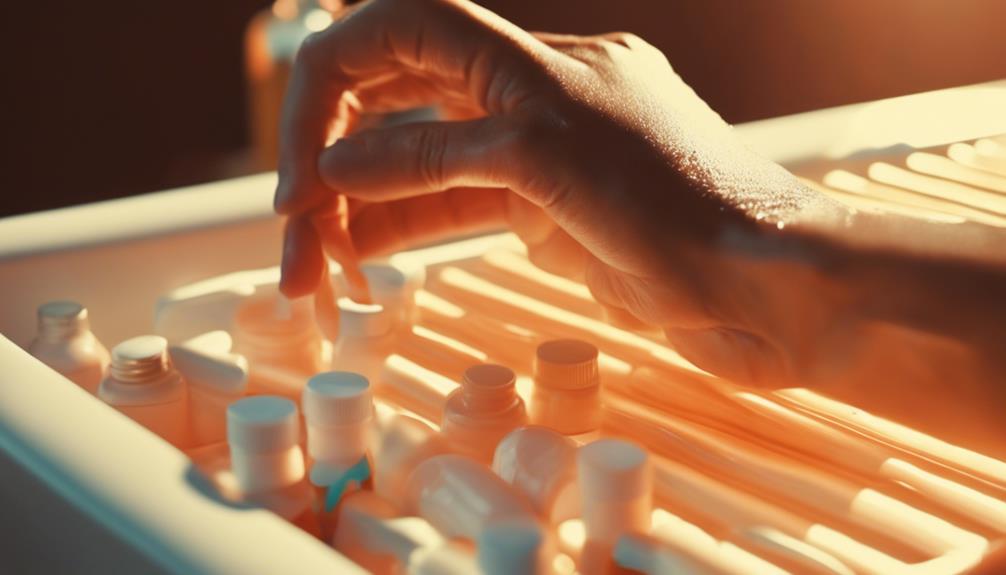
Even with a solid post-tan care routine, many people still make common mistakes during lotion application that can hinder their tanning results.
One big mistake? Skipping exfoliation before applying lotion. You wouldn't paint a wall without prepping it first, right?
Another error is applying too little product, leaving patches behind. Remember, more isn't always better, so find that sweet spot!
Also, don't forget to wear protective eyewear—your eyes deserve some love, too!
And please, please avoid using the wrong type of lotion; indoor tanning lotions are specially formulated for a reason.
Last but not least, always wash your hands after applying lotion, unless you want to rock those tanned palms!
Keep these tips in mind, and you'll be golden!
Frequently Asked Questions
How Often Should I Change My Tanning Bed Lotion?
You should change your tanning bed lotion every few months or sooner if you notice it's not performing well. Keep an eye on skin reactions and adjust based on your tanning goals and needs.
Can I Mix Different Tanning Lotions Together?
Did you know mixing different tanning lotions can lead to uneven results? You shouldn't mix them, as formulations vary. Stick to one lotion to guarantee even application and best tanning results for your skin type.
Is It Safe to Tan Every Day?
Tanning every day isn't safe for your skin. It can lead to burns and long-term damage. Instead, space out your sessions to allow your skin to recover and maintain a healthy glow.
Do Tanning Lotions Expire?
Yes, tanning lotions do expire. You should check the expiration date on the bottle. Using expired lotion can lead to uneven tanning or skin irritation, so always guarantee your products are fresh and effective before application.
What Ingredients Should I Avoid in Tanning Lotions?
Picture a sun-kissed glow turning into an angry red burn. Avoid harsh ingredients like parabens, alcohol, and synthetic fragrances in tanning lotions; they can irritate your skin and ruin your perfect tan. Choose wisely!
Conclusion
Now that you're armed with all the secrets to mastering tanning bed lotion application, you're ready to shine like a summer sun!
Just remember, a little prep goes a long way, and choosing the right lotion is like picking the perfect playlist for a road trip—it's gotta vibe with you.
So, plunge into your tanning journey, keep those tips in mind, and watch as your skin transforms into the beautiful bronze you've always dreamed of.
Happy tanning!
